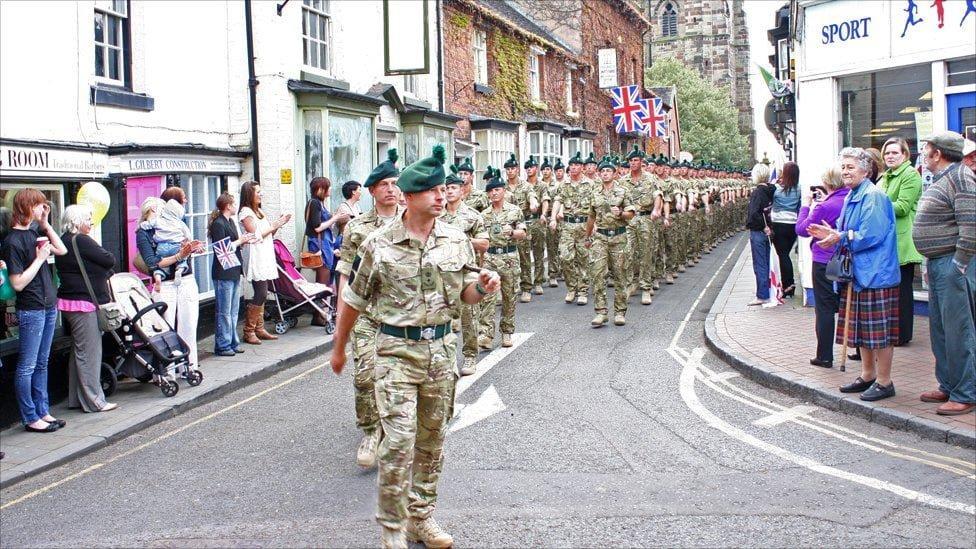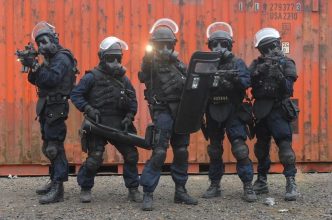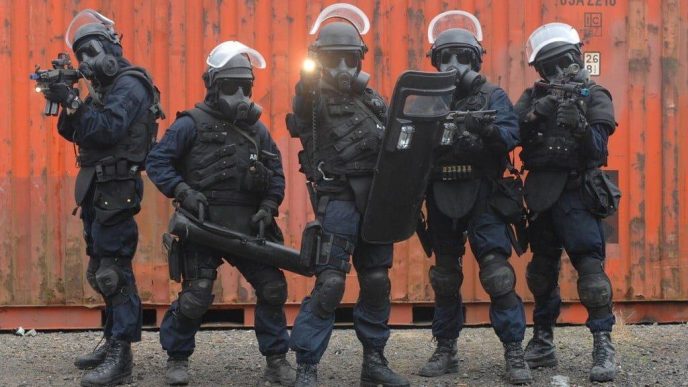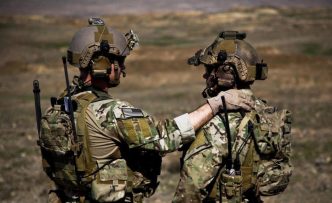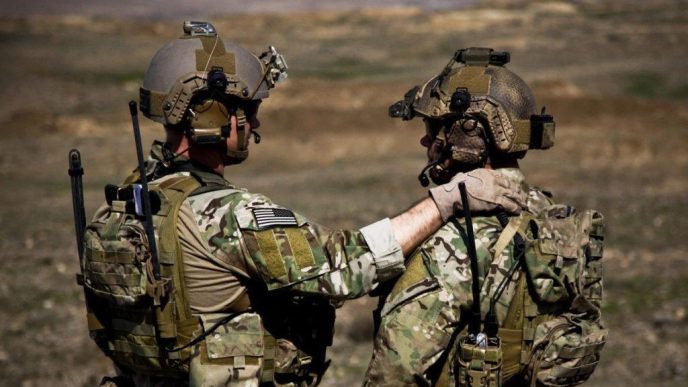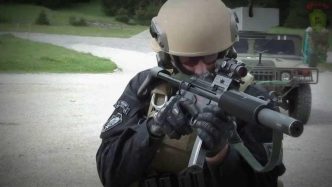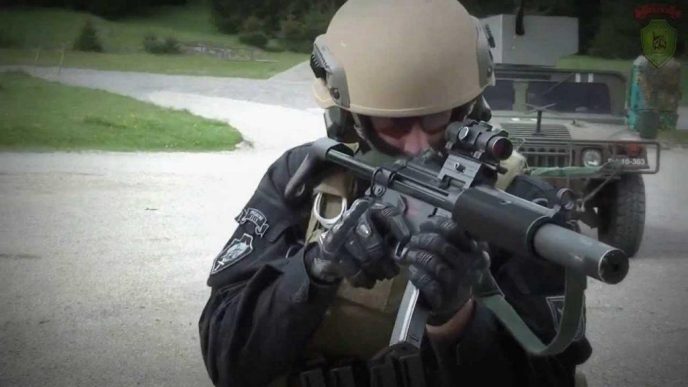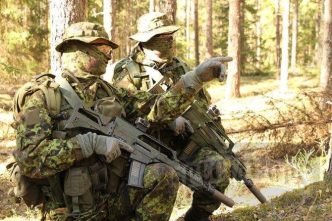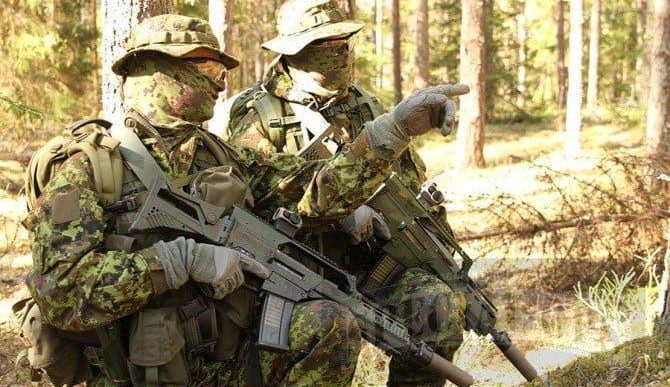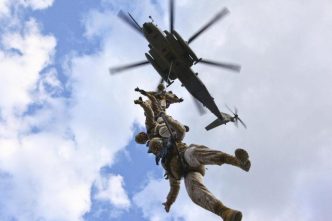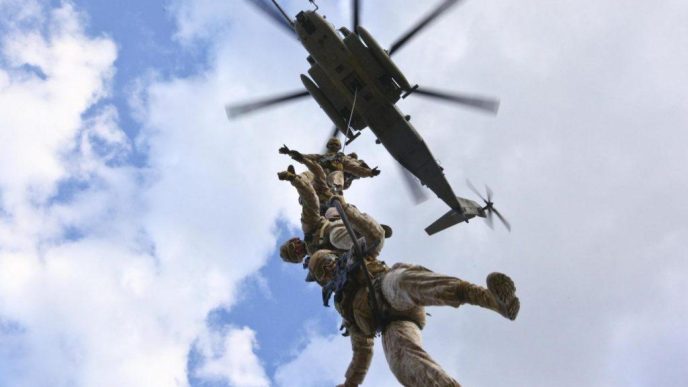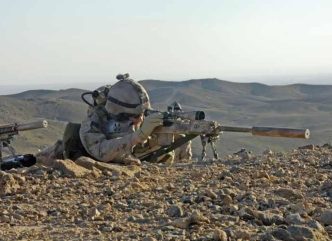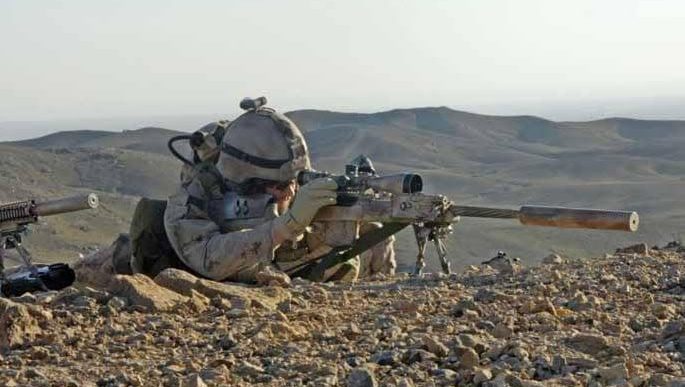The Royal Irish Rangers, an elite unit of the British army, came into being on 1 July 1968 through the amalgamation of the three remaining Irish infantry regiments of the British Army:
- The Royal Inniskilling Fusiliers
- The Royal Ulster Rifles
- The Royal Irish Fusiliers
During the 20th century, the strength of the British infantry expanded and contracted in response to the needs of government policy and in particular to the two World Wars, the Cold War and their aftermath. The early years of the century saw Infantry Regiments linked to a particular locality within the United Kingdom.
The date, when the Irish Royal Rangers were introduced, was initially known as “Vesting Day” (and then “Rangers Day”), emphasising that the traditions of the old regiments were “vested” in the new large regiment.
Each Regiment had two regular battalions and the territorial affiliations were further emphasised by the incorporation of militia and volunteers. Each Regiment also had its own Depot. On the eve of the First World War, there were eight Irish infantry regiments accounting for sixteen regular and twenty-six battalions of militia. During the First World War that followed these eight regiments expanded to ninety-two battalions, of which sixty-three served overseas. Once the First World War was over, the Army soon reverted to its pre-war establishment, and on account of the national economic situation, many militia battalions were placed in suspended animation.
In Ireland, the establishment of the Irish Free State in 1922 caused a further reduction. The intention was to retain The Royal lnniskilling Fusiliers and The Royal Irish Rifles because of their obvious connections with Northern Ireland and to disband the other six Irish infantry regiments. There were strong arguments to retain The Royal Irish Fusiliers and eventually a compromise was reached whereby The Royal Inniskilling Fusiliers and The Royal Irish Fusiliers combined to form one Corps each with one regular battalion and a common depot at Omagh. At the same time, The Royal Irish Rifles were re-designated The Royal Ulster Rifles.

In 1937, the second battalions were restored to The Royal lnniskilling Fusiliers and Royal Irish Fusiliers. At the same time, The London Irish Rifles were incorporated into the Corps of The Royal Ulster Rifles but still retaining their regimental identity.
Mobilisation in 1939 thus saw six regular Irish battalions of the Line and two territorial battalions of The London Irish Rifles prepared for active service. Further battalions were raised during the course of the War, but the scale of expansion of the First World War was not repeated. Each of the three Irish regiments was represented in 38th (Irish) Brigade, which served with distinction in North Africa and Italy.
The actions of all battalions can be followed in their respective histories. Despite the decision to augment voluntary enlistment with National Service in the post-war Army, line infantry regiments were reduced to a single regular battalion each by 1948. The 2nd Bn. Royal lnniskilling Fusiliers was one of six battalions raised as a result of the Cold War in 1948 but was again disbanded in 1955. For the three Irish regiments of the Line, this reduction was balanced by the raising of three Territorial Army battalions in Northern Ireland in 1947, whilst The London Irish Rifles contributed one battalion to the post-war Territorial Army on the mainland. National Service continued until 1962. Whilst there was no ‘call up’ in Northern Ireland, many men of Irish stock living in Britain were called up with their colleagues and posted to the Irish Regiments. By this time, it was apparent to all that there were to be significant cuts in the Armed Forces. Infantry reorganisation was inevitable as the new, all Regular Army, would require fewer battalions.
The people who aren’t familiar with British army often made a mistake and changing The Royal Irish Rangers for Army Ranger Wing, a special unit of Irish Defence Force. That two units are totally different and they have no common connections, except they are Irish.
Today, the Royal Irish Rangers are proudly serving to the crown as other regular British units.
